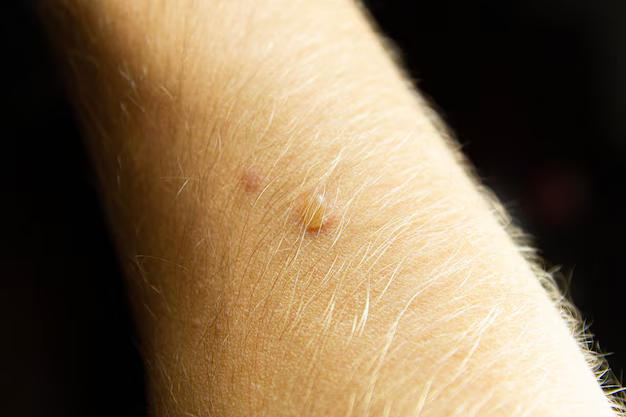Understanding Shingles: What to Look For and How It Manifests
Experiencing an unexpected rash or unusual skin sensation can naturally cause concern. Among the various skin-related conditions, shingles is a particularly noteworthy one. Known medically as herpes zoster, this condition results from the reactivation of the varicella-zoster virus, the same virus responsible for chickenpox. Whether you are concerned about a new rash, curious about health, or researching for a loved one, understanding what shingles look like is an integral first step.
Identifying Shingles: The Visual Guide
Shingles is primarily recognized by its distinctive rash and skin manifestations. Here's a closer look:
The Initial Symptoms
Shingles often begins with vague symptoms even before the rash becomes visible. These can include:
- Burning, tingling, or numbness in a localized skin area.
- Sensitivity to touch in the affected region.
- Localized pain, which can be sharp or dull.
These early signs precede the visible rash and can persist for a few days.
The Rash Appearance
Once the rash emerges, its characteristics become clearer:
Distribution: Shingles typically appear as a band or strip of red patches on one side of the body. This unilateral distribution is due to the virus' preference for following nerve paths, affecting the skin surface above the infected nerves.
Vesicles: The red patches quickly evolve into small, fluid-filled blisters known as vesicles. These blisters are similar in appearance to those caused by chickenpox but are more clustered.
Formation and Progression: Over several days, these vesicles may continue to appear, burst open, dry out, and scab over. It's common for these sequences of stages to overlap as new vesicles appear while older ones are healing.
Location: Most frequently, shingles manifest on the torso, following a rib path. However, they may also appear on the neck, arms, legs, or even face.
Color and Texture
Color: Initially red, the color of the shingles rash can deepen or become darker as it develops. Over time, the scabbing process may add brown or crusty hues.
Texture: Besides the blisters' fluid-filled nature, shingles-affected areas often feel gritty once the blisters break open and begin scabbing. The skin around the rash may appear swollen or inflamed.
The Science Behind Shingles
Understanding why shingles occur and how they manifest can provide more context to their appearance. Here's a brief overview:
The Reactivation of Varicella-Zoster Virus
Dormant to Active: After someone recovers from chickenpox, the varicella-zoster virus remains dormant in the nerve tissue. Years or even decades later, it can reactivate, causing shingles.
Risk Factors: Factors such as age (most common over 50), weakened immune system, stress, and health conditions can increase the risk of shingles.
Complications and Severity
Postherpetic Neuralgia (PHN): While most people recover from shingles completely, some may continue to experience nerve pain in the affected area long after the rash has healed.
Other Complications: If shingles occur near the eye or on the face, it may result in complications like vision problems, skin infections, or, rarely, neurological issues.
Living with and Managing Shingles
Coping with Symptoms
While this is not intended as medical advice, here are some common considerations for managing symptoms:
Comfort Measures: Wearing loose-fitting clothing and using cool compresses can help reduce discomfort from shingles rash.
Itch Management: Avoid scratching the rash to prevent further irritation or secondary infection.
Understanding Contagion
Shingles is contagious only through direct contact with the fluid from the blisters. It can cause chickenpox in individuals who haven't had it or been vaccinated against it, primarily during the blistering stage when the fluid is present.
Seeking Medical Advice
If you suspect shingles, particularly if the rash appears on the face or near the eyes, seeking professional evaluation is crucial to manage symptoms and prevent complications effectively.
Preventive Measures and Next Steps
Vaccination
Zoster Vaccine: Vaccination is an effective strategy to reduce the risk of developing shingles and its complications. It's commonly recommended for adults over 50, regardless of previous chickenpox history.
Prophylactic Considerations: Regular consultations with a healthcare provider can help determine if vaccination is appropriate based on individual health factors.
Well-being and Lifestyle
Healthy Living: A balanced diet, regular exercise, stress management, and adequate sleep can support the immune system, potentially reducing the risk of shingles and other infections.
Monitoring and Awareness: Staying informed about shingles symptoms can lead to timely medical consultation and management, enhancing health outcomes and comfort.
Shingles, with its unique presentation and implications, is a condition marked by discomfort but manageable with awareness and timely care. Recognizing its visual signs is a pivotal aspect of response, aiding in early identification and potentially reducing the duration and impact of symptoms.
Key Takeaways on Shingles 🚀
- Recognize early: Burning or tingling sensations often precede the visual rash. 🔍
- Note the rash: Unilateral clusters of blisters on the body, typically appearing as a band. 🌈
- Memory of chickenpox: It's a reactivation of the chickenpox virus, often after many years. 💡
- Vaccination is key: Recommended for those over 50, significantly reduces risk. 💉
- Health and hygiene: Maintaining strong immunity and avoiding rash contact can prevent complications. 🚫
Understanding shingles empowers individuals with knowledge to address concerns effectively, engage with healthcare services appropriately, and manage the condition with confidence.
